




Low water crossings are designed to allow normal flow under the trail, and to be over-topped during seasonal floods.
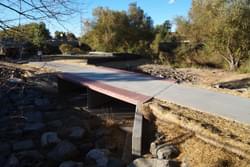
Regarding the current Trail Accessibility Guidelines in place under the US ABA, they would generally meet those requirements, as long as they are well maintained and surfaces are kept firm and stable (i.e. sand and pebbles are removed after floods). Also, obviously, during flood periods, the trail would be closed and therefore inaccessible.
Functionally, these types of crossings can be much more accessible because gradual grades can be maintained. These crossings do not need to rise up above the 100-year mark (as bridges generally do), making it easier in areas with little topography to meet the grade requirements for accessibility. The greatest accessibility issue I see is in providing edge protection to users. This is not required under our ABA Trail Accessibility Guidelines, but if they make sense for safety, any raised edge protection or railings simply don't work. The best that most trails do is provide color and texture differentiation at the edges in order to make them as safe as possible for folks with visual impairments.
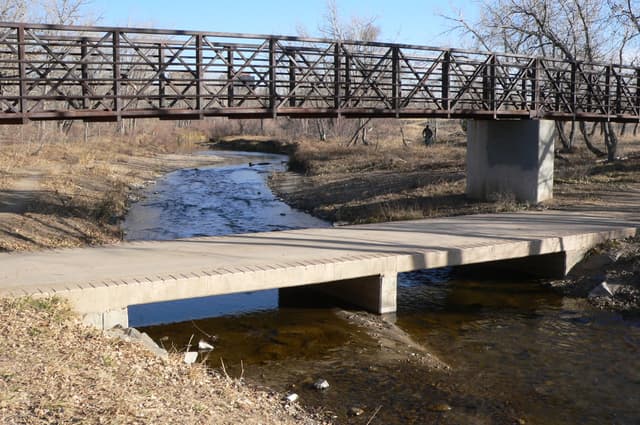
Cherry Creek Trail in Denver, Colorado is crossed by both a steel trail bridge and low-water concrete trail structure

Cherry Creek Trail in Denver, Colorado is crossed by both a steel trail bridge and low-water concrete trail structure
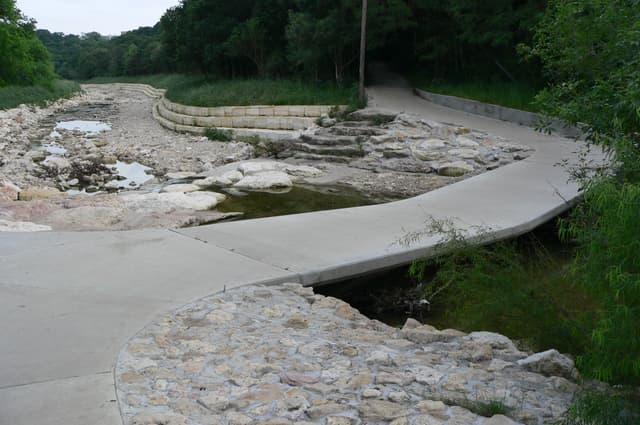
Built in 2006, the Janet Fish Pedestrian Bridge honors the founder of the Shoal Creek Hike and Bike Trail in Austin, Texas
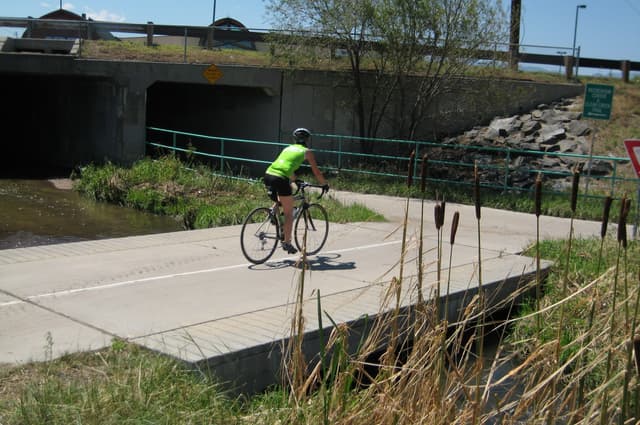
Low water crossing before trail enters road culvert on the Clear Creek Trail in Wheat Ridge, Colorado
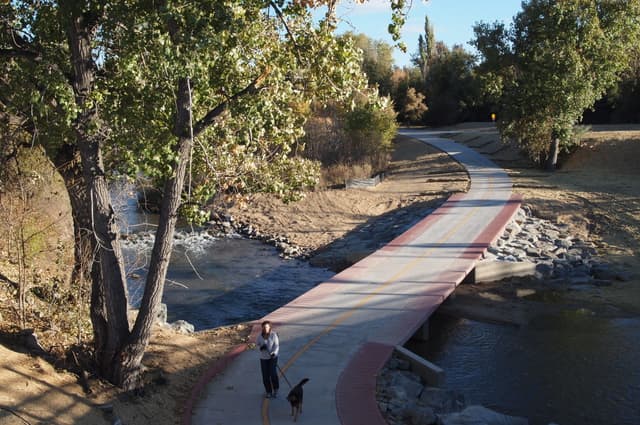
Pink concrete edges give visual warning on low water crossing over Cherry Creek at Holly Street bridge in Denver, Colorado
posted May 24, 2021
Are there any graduate programs that are focused on trail planning, development, and design?
FAQ: Apps for Trail Management and Volunteers
posted May 19, 2021
Information on apps that can be used for trail management that would be suitable for volunteer-type organizations.
FAQ: What is the definition of a trail?
posted Jan 14, 2021
Defining a trail corridor in law, policy, and planning.
1,361 views • posted 01/23/2019